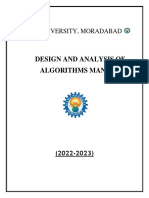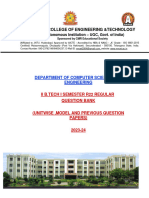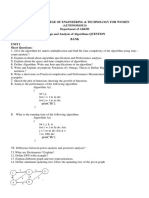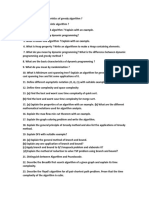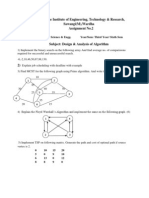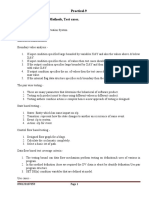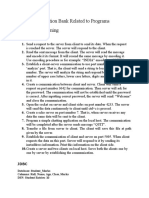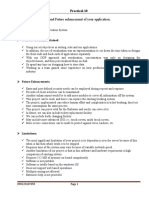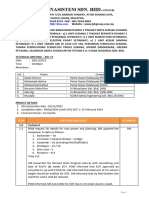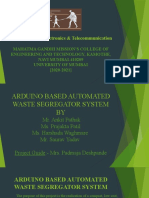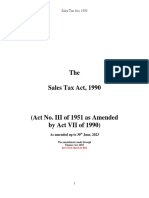0% found this document useful (0 votes)
161 views4 pagesAhmedabad Institute of Technology: CE & IT Department
The document provides information about an assignment for an algorithms course, including:
1) An assignment with 20 questions covering topics like algorithm analysis, sorting algorithms, graph algorithms, and complexity analysis.
2) An innovative assignment asking students to complete an online algorithms course from Coursera on topics like the toolbox, greedy algorithms, and dynamic programming.
3) The document was provided by professors from the Computer Engineering and IT department of Ahmedabad Institute of Technology for their algorithms course.
Uploaded by
TrishalaCopyright
© © All Rights Reserved
We take content rights seriously. If you suspect this is your content, claim it here.
Available Formats
Download as PDF, TXT or read online on Scribd
0% found this document useful (0 votes)
161 views4 pagesAhmedabad Institute of Technology: CE & IT Department
The document provides information about an assignment for an algorithms course, including:
1) An assignment with 20 questions covering topics like algorithm analysis, sorting algorithms, graph algorithms, and complexity analysis.
2) An innovative assignment asking students to complete an online algorithms course from Coursera on topics like the toolbox, greedy algorithms, and dynamic programming.
3) The document was provided by professors from the Computer Engineering and IT department of Ahmedabad Institute of Technology for their algorithms course.
Uploaded by
TrishalaCopyright
© © All Rights Reserved
We take content rights seriously. If you suspect this is your content, claim it here.
Available Formats
Download as PDF, TXT or read online on Scribd
/ 4

















